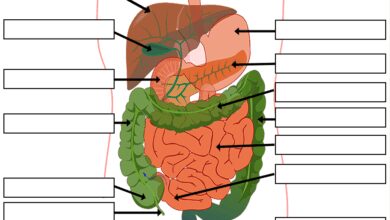System Apps Unlocked: 7 Powerful Secrets Revealed
Ever wondered what really runs your phone behind the scenes? It’s not just your favorite games or social media apps—system apps are the silent engines powering every tap, swipe, and notification.
What Are System Apps? A Deep Dive into Core Functions

System apps, often referred to as pre-installed or built-in apps, are software components that come bundled with an operating system. Unlike user-installed apps from app stores, these are integrated directly into the OS during manufacturing. They serve essential functions that keep your device running smoothly, from managing hardware to enabling core services like calling, messaging, and connectivity.
Definition and Role in Operating Systems
System apps are fundamental to the operation of smartphones, tablets, and even desktop computers. They operate at a deeper level than regular apps, often having elevated permissions and access to critical system resources. For example, on Android, apps like Phone, Settings, and Google Play Services are system apps because they interact directly with the OS kernel and hardware drivers.
- They are installed in the system partition, making them persistent across reboots.
- They usually cannot be uninstalled without root access.
- They often run in the background to maintain system stability.
Difference Between System Apps and User Apps
The distinction between system and user apps lies in their installation location, permissions, and lifecycle. User apps are downloaded from app stores and reside in the user partition, while system apps are flashed onto the device’s firmware.
“System apps are like the organs of a smartphone—they keep it alive, even if you don’t see them working.” — Tech Analyst, Mobile Insights 2023
- Installation: System apps are pre-loaded; user apps are installed manually.
- Permissions: System apps often have system-level privileges (e.g., modifying system settings).
- Removal: User apps can be uninstalled freely; system apps typically require root or ADB commands.
Types of System Apps Across Platforms
Different operating systems implement system apps in unique ways. While the core purpose remains the same—ensuring device functionality—their structure and behavior vary significantly between Android, iOS, Windows, and Linux-based systems.
Android System Apps: Structure and Examples
On Android, system apps are stored in the /system/app or /system/priv-app directories. The latter contains privileged apps with higher access rights. Examples include:
- Settings: Manages device configuration and user preferences.
- Phone & Dialer: Handles voice calls and SIM interactions.
- Google Play Services: Enables background sync, location services, and API access for third-party apps.
- System UI: Controls the status bar, navigation bar, and quick settings.
These apps are signed with the platform key, ensuring they are trusted by the OS. Developers can create system apps by building custom ROMs or using tools like Android Manifest permissions.
iOS System Apps: Apple’s Closed Ecosystem Approach
Apple takes a more restrictive approach. iOS system apps like Phone, Messages, Calendar, and Health are deeply integrated into the OS and cannot be removed, even by power users. This ensures consistency and security but limits customization.
- They are sandboxed but have special entitlements for hardware access.
- Apple occasionally allows disabling (but not uninstalling) some apps like Stocks or Compass.
- iOS 17 introduced limited app hiding, but the binaries remain on the device.
For more details on iOS app architecture, visit Apple’s UIApplication documentation.
Windows and Linux: Desktop System Applications
On desktop systems, system apps include services like Windows Update, Task Manager, and Registry Editor. In Linux, system apps are often command-line utilities such as systemd, udev, and NetworkManager.
- They manage boot processes, hardware detection, and user sessions.
- Many run as daemons or background services.
- Users can disable or replace them, but doing so risks system instability.
Why System Apps Are Critical for Device Performance
System apps are not just bloatware—they are essential for maintaining device performance, security, and usability. Without them, your smartphone would be little more than a brick with a touchscreen.
Role in Boot Process and System Stability
When you power on your device, the bootloader initializes the kernel, which then launches critical system apps. These include:
- Zygote (Android): Initializes the Dalvik/ART runtime for app execution.
- init (Linux/Android): Starts system services and mounts filesystems.
- SpringBoard (iOS): Loads the home screen and manages app switching.
If any of these system apps fail, the device may enter a boot loop or crash during startup. This highlights their importance in maintaining system integrity.
Impact on Battery Life and Resource Management
While essential, some system apps can consume significant resources. For example, Google Play Services on Android is known for background syncing, which can drain battery if not managed.
- Some system apps run continuously (e.g., location services).
- Others activate only when needed (e.g., camera calibration apps).
- Users can restrict background activity via settings, but this may break functionality.
“A single misbehaving system app can reduce battery life by up to 30%. Monitoring them is crucial.” — Battery Performance Report, GSMArena 2022
Security Implications of System Apps
Due to their elevated privileges, system apps are high-value targets for attackers. A vulnerability in a system app can lead to full device compromise, data theft, or persistent malware infections.
Permissions and Privilege Escalation Risks
System apps often have permissions that regular apps cannot request, such as:
INTERACT_ACROSS_USERS: Allows interaction between user profiles.PACKAGE_USAGE_STATS: Enables monitoring of app usage.WRITE_SECURE_SETTINGS: Permits modification of secure system settings.
If exploited, these permissions can enable privilege escalation attacks. For instance, a malicious app with access to WRITE_SECURE_SETTINGS could disable security features like screen locks.
Historical Vulnerabilities and Exploits
Over the years, several high-profile vulnerabilities have been found in system apps:
- Stagefright (2015): A flaw in Android’s media processing system app allowed remote code execution via MMS.
- WireLurker (2014): Targeted macOS and iOS system processes to install malicious apps.
- StrandHogg (2019-2020): Exploited Android’s task-switching system app to spoof legitimate apps.
These cases underscore the need for rigorous security audits and timely updates. For more on Android security, check Google’s Android Security Overview.
How to Manage System Apps: Enable, Disable, or Remove?
While you can’t always uninstall system apps, you can manage their behavior to improve performance and privacy. The methods vary by platform and device access level.
Safe Methods: Disabling Without Root
Most Android devices allow users to disable pre-installed apps through Settings:
- Go to Settings > Apps > See all apps.
- Select the system app (e.g., Google Duo).
- Tap Disable or Uninstall updates.
This stops the app from running and removes its updates, though the app remains on the system partition. It’s a safe way to reduce bloat without risking system instability.
Advanced Techniques: Rooting and ADB
For full control, users can use:
- ADB (Android Debug Bridge): A command-line tool to disable or remove system apps without root.
- Root Access: Grants full administrative control, allowing deletion of system apps.
Example ADB command to disable an app:
adb shell pm disable-user --user 0 com.android.bloatware.app
While powerful, these methods carry risks. Removing a critical system app can render the device unusable. Always back up before making changes. Learn more at Android ADB Documentation.
System Apps vs Bloatware: Understanding the Difference
Not all system apps are useful. Some are added by manufacturers or carriers and serve more as marketing tools than functional utilities. These are often labeled as “bloatware.”
Defining Bloatware in Modern Devices
Bloatware refers to pre-installed apps that are unnecessary, rarely used, and difficult to remove. Examples include:
- Trial versions of antivirus software.
- Carrier-specific apps (e.g., Verizon Messages).
- Manufacturer skins like Samsung’s Galaxy Store or Xiaomi’s GetApps.
While some bloatware offers minor conveniences, much of it consumes storage, runs in the background, and slows down the device.
Impact on User Experience and Storage
Studies show that bloatware can occupy up to 10GB of storage on new devices. This is especially problematic on budget phones with limited internal memory.
- Reduces available space for user apps and media.
- Increases boot time and RAM usage.
- Can lead to user frustration and negative reviews.
Manufacturers are slowly responding. Google’s Android One and Pixel devices ship with minimal bloatware, focusing on a clean user experience.
Future Trends in System App Development
As operating systems evolve, so do system apps. Emerging technologies like AI, modular OS design, and enhanced privacy controls are reshaping how system apps are built and used.
AI-Powered System Services
Modern system apps increasingly use machine learning to improve performance. Examples include:
- Adaptive Battery (Android): Learns app usage patterns to optimize power consumption.
- Siri Suggestions (iOS): Predicts actions based on context and usage history.
- Windows Copilot: Integrates AI into system-level tasks like search and automation.
These AI-driven system apps enhance usability but raise concerns about data privacy and local processing limits.
Modular System Apps and Project Treble
Google’s Project Treble introduced a modular architecture for Android, separating the OS framework from vendor implementations. This allows system apps to be updated independently of full OS updates.
- Enables faster security patches and feature rollouts.
- Reduces fragmentation across Android devices.
- Paves the way for Project Mainline, where Google delivers core system app updates via the Play Store.
This shift means system apps can evolve more rapidly, improving security and functionality without requiring carrier-approved firmware updates.
How Developers Can Create or Modify System Apps
For advanced users and developers, building or modifying system apps opens doors to customization, automation, and deeper OS integration.
Requirements for Building System Apps
To develop a system app, you need:
- A signed certificate matching the platform key (for Android).
- Proper permissions declared in the
AndroidManifest.xml. - Installation in the
/system/priv-appdirectory for privileged access.
Developers typically build system apps as part of a custom ROM or enterprise solution. Open-source projects like LineageOS provide frameworks for creating lightweight, bloat-free system app suites.
Use Cases: Enterprise and Custom ROMs
System apps are vital in specialized environments:
- Enterprise Mobility: Companies deploy custom system apps for device management (MDM), kiosk mode, and secure communication.
- Custom ROMs: Enthusiasts replace stock system apps with optimized versions for better performance and privacy.
- IoT Devices: Embedded systems use minimal system apps tailored to specific hardware functions.
These use cases demonstrate the flexibility and power of system apps when leveraged correctly.
Troubleshooting Common System App Issues
Even essential system apps can malfunction. Common problems include crashes, excessive battery drain, and permission conflicts.
Clearing Cache and Data
When a system app misbehaves, clearing its cache is often the first fix:
- Go to Settings > Apps > [App Name] > Storage.
- Tap Clear Cache (safe) or Clear Data (resets app settings).
This resolves issues caused by corrupted temporary files without removing the app.
Updating and Reinstalling System Apps
Some system apps receive updates via the Play Store (e.g., Google Play Services, Android System WebView).
- Check for updates regularly.
- If an update fails, uninstall updates and restart the device to restore the default version.
- For non-updatable apps, flashing a new ROM may be necessary.
Always ensure your device firmware is up to date to avoid compatibility issues.
What are system apps?
System apps are pre-installed software components that are integral to the operation of an operating system. They manage core functions like calling, messaging, settings, and hardware control. Unlike user-installed apps, they reside in the system partition and often require special permissions to modify or remove.
Can I uninstall system apps?
Most system apps cannot be uninstalled without root access or ADB commands. However, you can usually disable them through device settings, which stops them from running and removes their updates. Disabling is safer than uninstalling, as it prevents potential system instability.
Are system apps safe?
Most system apps from trusted vendors (like Google, Apple, or Microsoft) are safe and essential for device functionality. However, vulnerabilities can exist, and bloatware from third parties may pose privacy or performance risks. Keeping your OS updated minimizes security threats.
Why do system apps run in the background?
System apps often run in the background to maintain device functionality—such as managing notifications, syncing data, or monitoring sensors. While necessary, some may consume battery or memory. You can restrict their background activity in settings, but this may affect core features.
How do system apps affect battery life?
Some system apps, like Google Play Services or location managers, can significantly impact battery life due to constant background activity. Monitoring their usage in battery settings and disabling unnecessary features can help optimize performance.
System apps are the backbone of modern operating systems, silently ensuring that your device functions seamlessly. From managing hardware to enabling connectivity and security, they play a crucial role in both performance and user experience. While some may be seen as bloatware, the majority are essential components that cannot be removed without consequences. Understanding how they work, how to manage them, and their impact on security and performance empowers users to make informed decisions. As technology evolves, system apps will continue to integrate AI, modular design, and enhanced privacy features, shaping the future of digital devices. Whether you’re a casual user or a developer, recognizing the power and purpose of system apps is key to mastering your device.
Further Reading:









